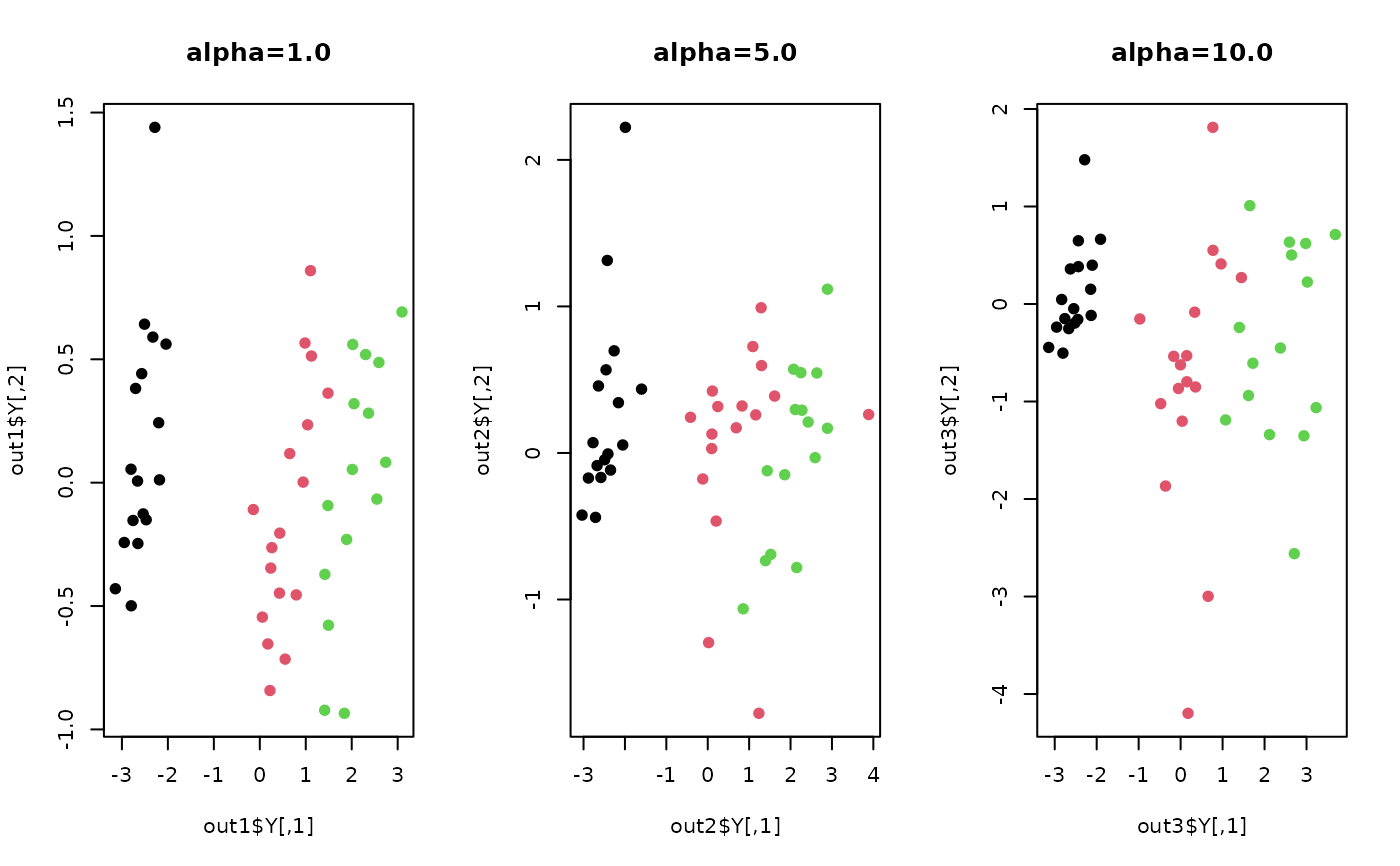Curvilinear Component Analysis (CRCA) is a type of self-organizing algorithms for
manifold learning. Like MDS, it aims at minimizing a cost function (Stress)
based on pairwise proximity. Parameter lambda is a heaviside function for
penalizing distance pair of embedded data, and alpha controls learning rate
similar to that of subgradient method in that at each iteration \(t\) the gradient is
weighted by \(\alpha /t\).
do.crca(X, ndim = 2, lambda = 1, alpha = 1, maxiter = 1000, tolerance = 1e-06)Arguments
- X
an \((n\times p)\) matrix or data frame whose rows are observations and columns represent independent variables.
- ndim
an integer-valued target dimension.
- lambda
threshold value.
- alpha
initial value for updating.
- maxiter
maximum number of iterations allowed.
- tolerance
stopping criterion for maximum absolute discrepancy between two distance matrices.
Value
a named list containing
- Y
an \((n\times ndim)\) matrix whose rows are embedded observations.
- niter
the number of iterations until convergence.
- trfinfo
a list containing information for out-of-sample prediction.
References
Demartines P, Herault J (1997). “Curvilinear Component Analysis: A Self-Organizing Neural Network for Nonlinear Mapping of Data Sets.” IEEE Transactions on Neural Networks, 8(1), 148--154.
Hérault J, Jausions-Picaud C, Guérin-Dugué A (1999). “Curvilinear Component Analysis for High-Dimensional Data Representation: I. Theoretical Aspects and Practical Use in the Presence of Noise.” In Goos G, Hartmanis J, van Leeuwen J, Mira J, Sánchez-Andrés JV (eds.), Engineering Applications of Bio-Inspired Artificial Neural Networks, volume 1607, 625--634. Springer Berlin Heidelberg, Berlin, Heidelberg. ISBN 978-3-540-66068-2 978-3-540-48772-2.
See also
Examples
## use iris data
data(iris)
set.seed(100)
subid = sample(1:150, 50)
X = as.matrix(iris[subid,1:4])
label = as.factor(iris[subid,5])
## different initial learning rates
out1 <- do.crca(X,alpha=1)
out2 <- do.crca(X,alpha=5)
out3 <- do.crca(X,alpha=10)
## visualize
opar <- par(no.readonly=TRUE)
par(mfrow=c(1,3))
plot(out1$Y, col=label, pch=19, main="alpha=1.0")
plot(out2$Y, col=label, pch=19, main="alpha=5.0")
plot(out3$Y, col=label, pch=19, main="alpha=10.0")
 par(opar)
par(opar)